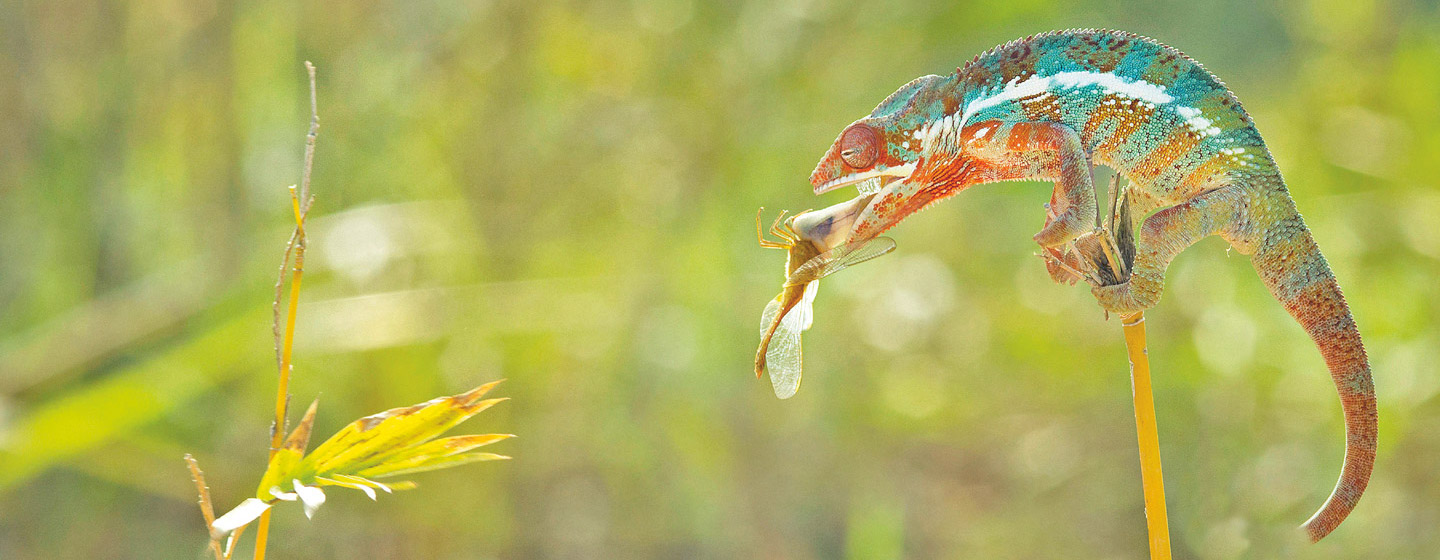A dragonfly buzzes through the air, stopping to rest on a branch. All of a sudden, SPLAT! A chameleon snatches the bug with its long, sticky tongue.
Chameleons are some of nature’s most effective predators. Their tongues unfurl at lightning speed and can stretch twice the length of their bodies to help them capture insects, other lizards, and even small birds to eat.
Pascal Damman, a physicist at the University of Mons in Belgium, knew scientists had studied how a chameleon’s tongue moves. But Damman was interested in another question: Does mucus, a slimy substance in a chameleon’s spit, also help it catch its prey? Damman and his team set up an experiment to find out.
A dragonfly buzzes through the air. It stops to rest on a branch. All of a sudden, SPLAT! A chameleon grabs the bug with its long, sticky tongue.
Chameleons are some of nature’s best predators. Their tongues whip out at lightning speed. They stretch twice the length of the animals’ bodies. Chameleons use their tongues to catch and eat insects, other lizards, and even small birds.
Pascal Damman is a physicist in Belgium. He knew scientists had studied how a chameleon’s tongue moves. But Damman had another question. Does a chameleon’s spit also help it catch its prey? He set up an experiment to find out.

